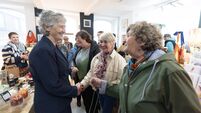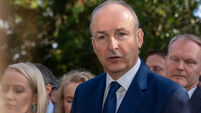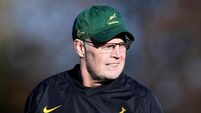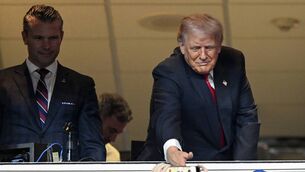Paul Rouse: Pigeon racing trying to navigate through a Brexit storm
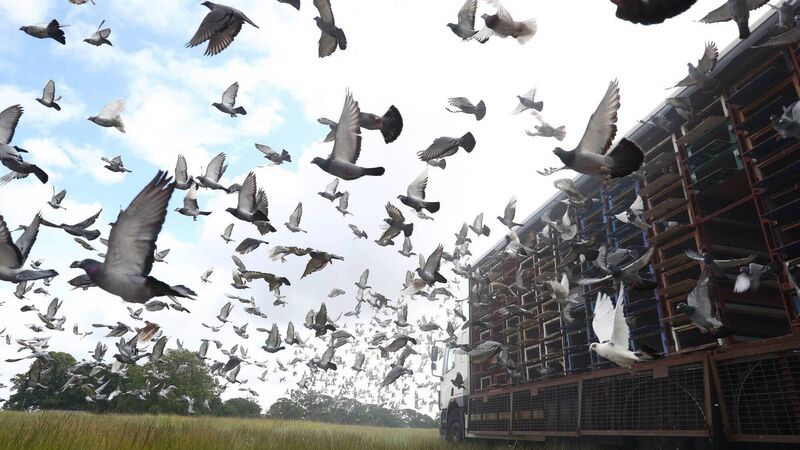
Pigeons are liberated by the Gloucester Federation at Yeovil Showground last year. Picture: Michael Steele/Getty Images
The ways in which the shameless cabal of opportunists who have made their political careers on the back of Brexit have complicated the lives and loves of tens of millions of people is apparently endless.
It is the ultimate political theatre of the absurd — and the latest group to be affected are pigeon fanciers.
Under rules that are supposed to come into effect in October, racing pigeons will have to be in the EU for 21 days before they are allowed to race. The racing pigeons will also need a health certificate signed by a vet.
This has caused consternation in England among pigeon owners and among members of the Royal Pigeon Racing Association.
This may be considered something of a niche matter, but it’s not. The Royal Pigeon Racing Association has 20,000 members, and the racing of pigeons is a sport that dates back 150 years and more.
And cross-channel races are central to the sport. Pigeons have raced between the continent of Europe and the islands of Britain and Ireland for as long as their has been organised pigeon racing.
The racing homer pigeon has remarkable navigational abilities. It would appear that once a pigeon identifies with their loft (and this is a thing that can happen when the bird is some six weeks old) it will ordinarily return home to it. Indeed, homing pigeons can fly many thousands of kilometres, crossing land and sea, to make that journey home. There are epic stories of pigeons flying to Ireland from Barcelona and even from further afield.
It is this capacity that has been exploited down through the centuries by humans, with pigeons being used to transmit news and messages. They were used to carry information around the Roman Empire, for example, connecting outlying regions with Rome. And, even as the technology of our modern world destroyed the meaning of distance, Reuters’ News Agency used a flock of 45 pigeons when it was established in 1850 — the pigeons were used to cover gaps in the telegraphic network that was then spreading across Europe.
As well as being shaped by technological change, the place of pigeons in the modern world was also hugely influenced by military matters.
The British set up the Army and Navy Pigeon Service in the late 19th century and in that pre-radio era, the ships of the British army carried pigeons; indeed, many of the early fighter planes of the 20th century also carried pigeons.
During the two World Wars that stained the 20th century, pigeons were extensively used to carry messages and after the Second World War pigeons in Britain were treated “not as pests but as heroes. Pigeon racing became hugely popular. During the 1950s and 1960s it was the most popular sport, by participation, in the country, with a quarter of a million active flyers tending to 70,000 lofts”, as Jon Day has written in the London Review of Books.
The actual racing of pigeons was well-established before then. In Britain and in Belgium — and later in other countries — formal races between pigeons were established in the second half of the 19th century. Pigeon clubs were founded, and a governing body for those clubs was established. And of course the sport got its own newspaper — the Racing Pigeon.
Ireland was bound into this sporting revolution from the beginning. In 1881, a newspaper called Sport joined with the Great Southern and Western Railway to stage the country’s first pigeon race. The winning bird travelled from Limerick Junction to the offices of Sport on Middle Abbey Street in Dublin in three hours and 27 minutes, before being displayed for a week in the windows of the paper’s offices.
The Irish Homing Union was established in 1895 and there are at least 120 racing pigeon clubs. These clubs reside in two regions — the North Region which covers Northern Ireland and the Southern Region which covers the Republic of Ireland. There are also local federations of clubs across Ireland.
These fanciers enjoy a full calendar of sport. Races between their birds begin from a designated starting point and pigeons race to their home loft. Victory is calculated by a simple equation of calculating velocity. Basically — as anyone who was paying attention in maths class (not always an easy matter) will remember — you can calculate velocity by dividing distance by time.
So what is the position now with regard to racing pigeons in Ireland?
On Christmas Eve last, the Government published a document that set out general principles and relevant legislation. The document — which was then updated in March — outlined general conditions around the importation of birds, the requirements around documentation, the necessary veterinary certification, and the issues around border control.
A distinction was drawn between birds who were just being brought into Ireland and were to be immediately released to race back to their country of origin, on the one hand, and birds being permanently moved to Ireland to reside there, on the other.
What it all means is that for cross-border racing, and other movements, within Ireland, the border should present no problem. And there is currently a race programme underway, including a race from Mallow next week.
The racing calendar was completely upset during Covid, with restrictions putting an end to racing.
And then many pigeons themselves also got lazy and unfit in lockdown.
But the sport is now in full swing, as Henry Byrne, chairman of the Irish Homing Union explains: “We are flying to Ireland, north and south, from England and from France. There has been no stop to it from Brexit yet. There are about 5,000 pigeon fanciers racing on the island. Many more keep pigeons but don’t race them.”
The federated nature of the sport has allowed its members to continue to race against each other on an all-Ireland basis: “The Irish Homing Union is the governing body for the sport. But there is also an Irish section of The Royal Pigeon Racing Association based in the North. Together, we run an Irish championship every year.”
What difference will Brexit make to the sport in Ireland? The great likelihood is that the fact the Brexit deal essentially allows for Ireland to be treated on an all-island basis for agriculture created space for the continuation of the sport.
It seems likely a deal will be done between Britain and EU countries in respect of allowing pigeon racing to continue. That deal will inevitably involve the tedium of extensive paperwork, and it is not near the top of any list of priorities, but it will surely be resolved and things will continue.
For his part, Henry Byrne runs a business out in St Margaret’s, a village in north Dublin, where he sells loft equipment, varieties of pigeon feed, and other related services to pigeon fanciers across Ireland.
He devotes much of his spare time to voluntary service of club and governance committees — the stuff that makes the whole world of sport go around.
Paul Rouse is a professor of history at UCD.


